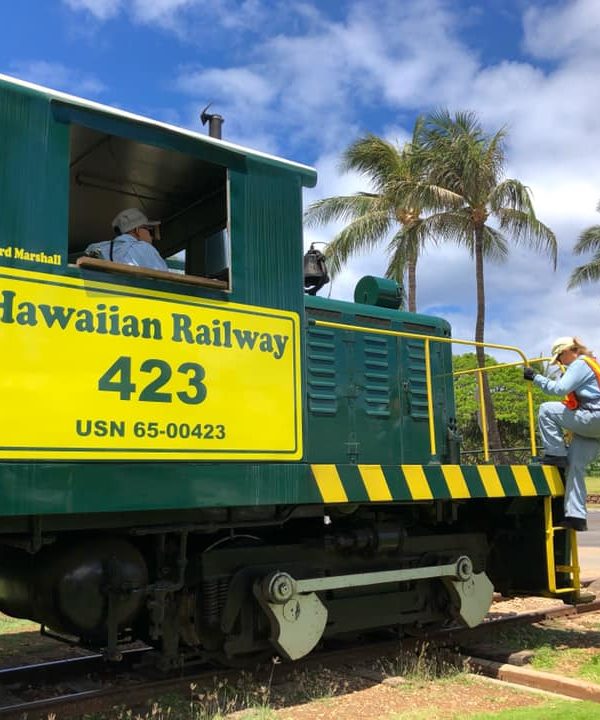Few vacationers venture through the Ewa district of Oahu unless they’re headed to either Ko’olina for golf or to Disney Aulani Resort for seven uninterrupted days of family fun. There is relatively little to see along this leeward section of the island which feels (is) more industrial than tropical and that opinion is emphasized further when you happen upon the dusty intersection of Roosevelt and Phillipine. On this corner lies the Hawaiian Railway Society. Upon appearance you may assume you’ve stumbled upon an abandoned railway turnabout. Broken down boxcars hide the roadside view, rusted wheels and rails lay on gravel, and a leaning chain link fence surrounds the entire compound. The sun filtering through the leeward haze scorches the scene in sepia, adding to the element that nothing good could live here.
Curious souls sneaking a peak through the fence do so cautiously, expecting a bull necked terrier to fire out of the wreckage. What awaits however, are kittens. Before you jump to metaphorical conclusions, the lot is indeed delightfully overrun by felines. Granted the editorial license can also be applied to the other life forms found within. Whether it’s Hawaiian Railway Society administrator Tom McCarthy riding in on his Harley or tattooed, tanned, and oil smeared resident historian Jeff Livingston, they both purr when asked about their labor of love – the preservation of Oahu’s historic railway. While they (and the rest of the on-site staff) are indeed engaged in around the clock efforts on the grounds of the HRS they are more than happy to drop a wrench and pull up a work bench to chat about the history of the Ewa Train for anyone that asks. On the other end of the spectrum you are just as welcome to explore the yard on your own, and you should. Allow yourself an additional hour to do so and bring a camera because the juxtaposition between the antique railcars (seemingly beyond repair) and the ones restored to their former glory are incredible.
Beyond the proverbial blood, sweat, and tears behind restoring locomotives and boxcars to their aesthetic and functioning status of decades ago, the Hawaiian Railway Society seeks to deliver the actual rail riding experience to visitors willing to depart from the typical attractions of the island. The Hawaiian Railway Society does not rely on expansive halls in the manner of Bishop Museum to tell its tale, it does so by putting you on the very tracks that once transported island lifeblood exports of sugar cane and pineapples. The Ewa Train is a literal mobile museum.
Twice every Sunday the Ewa Train and its open-air wooden boxcars seat a full house as it departs the station and steadily chugs its way towards Kahe Point. Passengers scramble to sit facing the ocean side view but the commentating conductor is quick to inform everyone that seats will be reversed at the point of return so that everyone gets to experience both sides of the tracks. Live narration starts before the engine churns telling guests what to expect along the journey and this very narration is a part of what makes the Ewa Train ride so much fun. The less inspiring scenery at the beginning of the 90-minute train ride is supplanted with fun anecdotes about the rich history along the rail. And at every road crossing intersection vehicle traffic and pedestrians exchange shaka hand gestures with Ewa Train passengers, spreading aloha spirit further along the line. But once the manicured grounds of Ko’olina and Disney Aulani resorts unfold the “oohs” and “ahhs” begin with an audible climax exploding when the view gives way to the Pacific Ocean. Perhaps it’s the charred landscape of the industrial leeward side that makes the first appearance of the sea here impossibly bluer, but the contrast created upon arrival at Kahe Point is almost shocking. During the 10-minute break you have to fight the temptation to jump off the Ewa Train to join the offshore catamaran snorkeling tours (at Electric Beach) teasing everyone at this point of return.
The recoil back to the Hawaiian Railway Society station has a bit of a solemn affect on passengers in the same way one realizes that a theme park roller coaster has slowed to its final lap. Yet it’s on the return that you begin to pick up on the small details surrounding the route. Your eyes catch the lizard-like mongoose slithering quickly into their holes near the tracks rattled by the train. You note the new community construction developments of Kapolei, indicating that in the next decade this area will likely become yet another epicenter of Oahu vacation property ownership with an injection of activities and attractions to boot. You conclude that this leeward corner is often misunderstood because of the unfair comparison to its gorgeous palm leaf lashed sibling, the windward side. The Ewa Train experience does not just teach passengers about the history of Hawaiian railway, it tugs on the sleeve of those of us that neglect the storied wild west of the island.
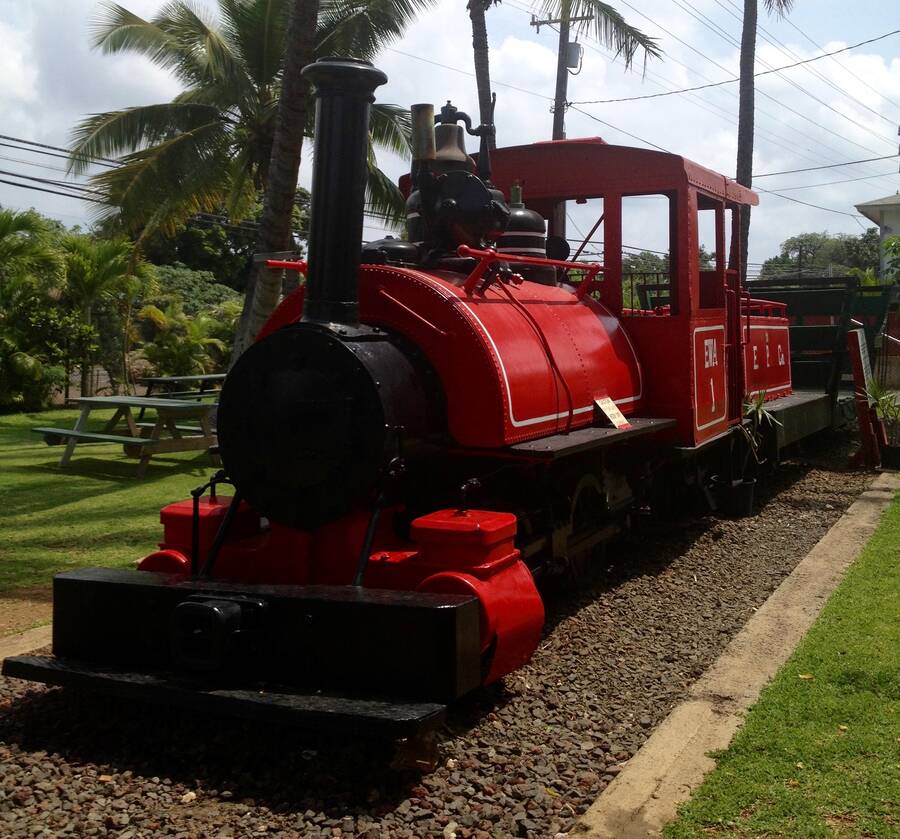
Restored locomotive
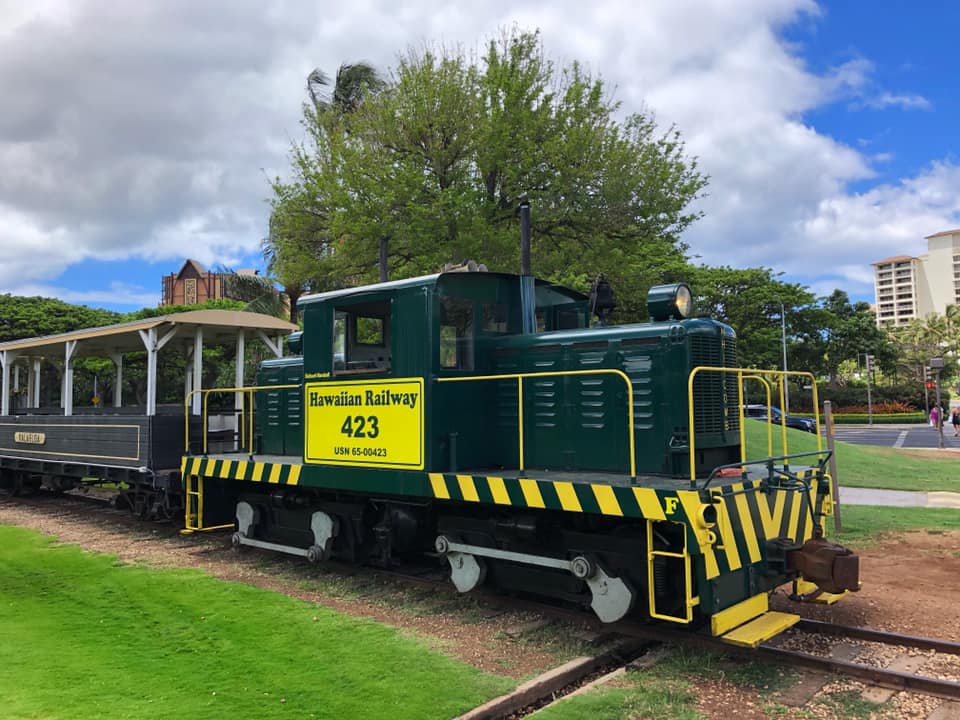
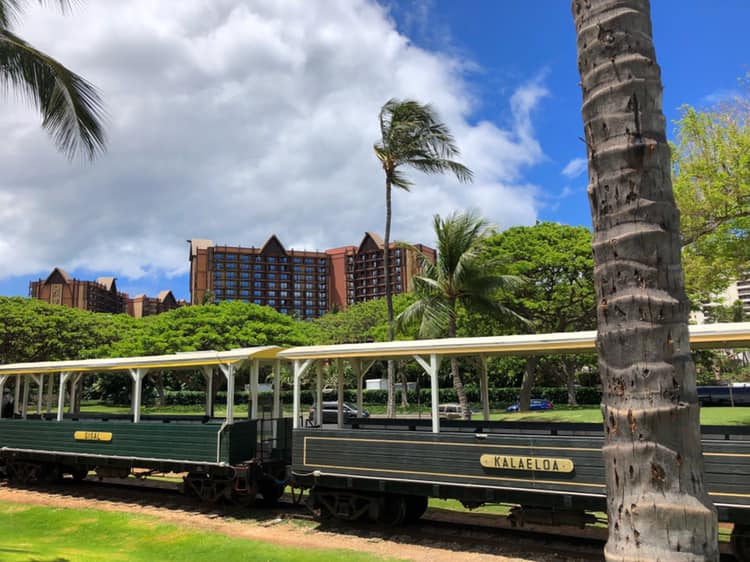
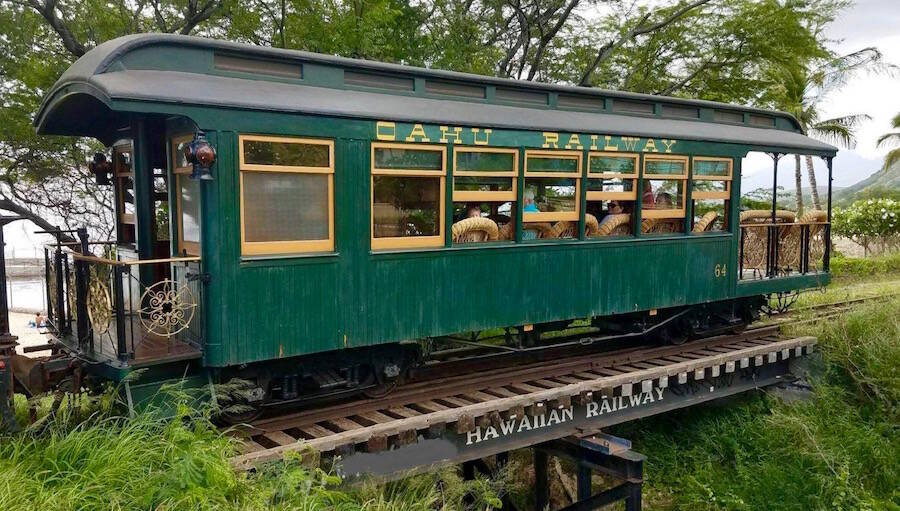
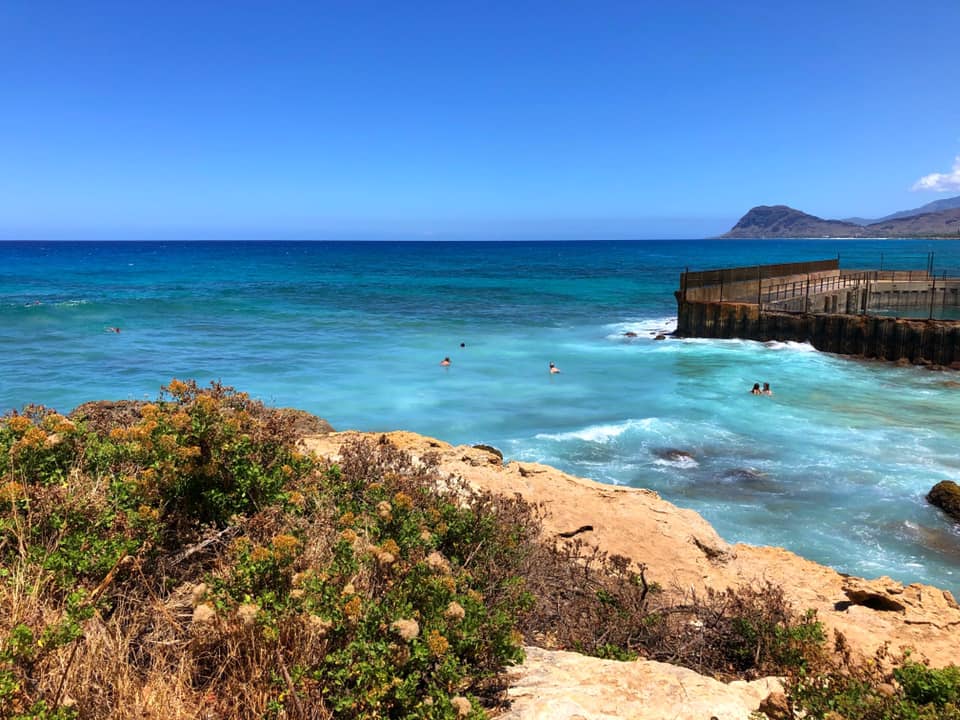
Sights along the way
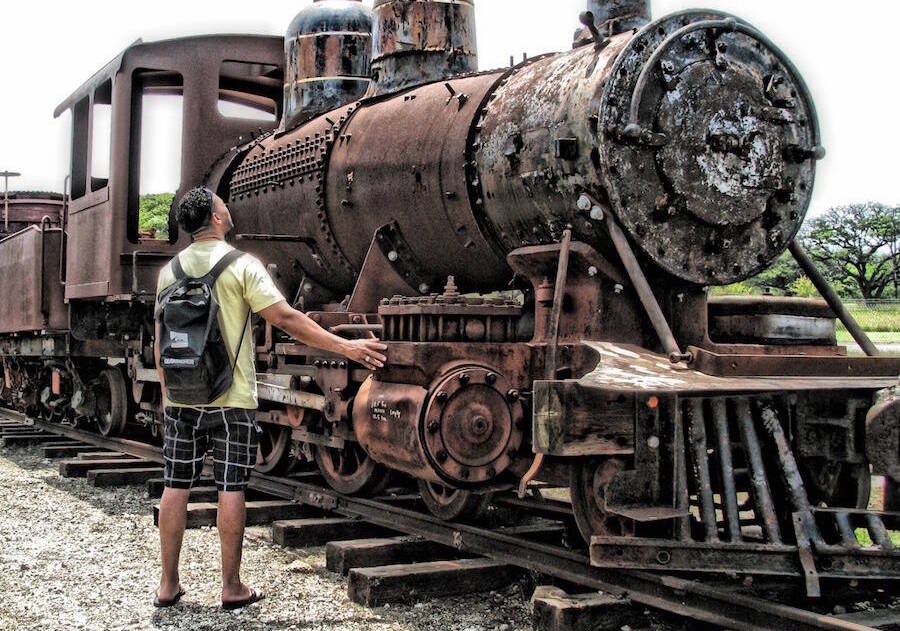
Rough edges at the old train yard
View schedule, fares, and booking information for the Ewa Train ride experience here.
 YAHglobal
YAHglobal 